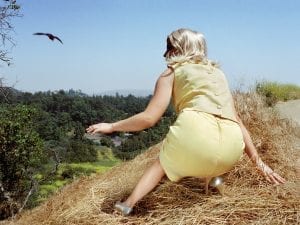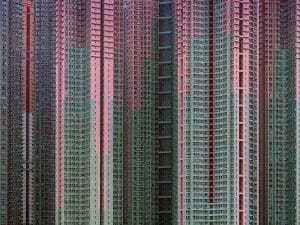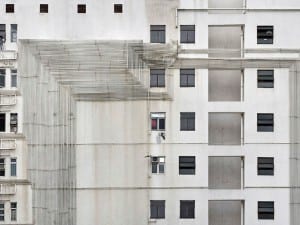More than half of the world’s population lives in cities. Offering a range of perspectives on urban environments, [SPACE] Street. Life. Photography. Seven Decades of Street Photography at the Deichtorhallen Hamburg comprises works by well-known figures such as Diane Arbus, Robert Frank, Lee Friedlander, William Klein and Martin Parr as well emerging international artists including Maciej Dakowicz, Mohamed Bourouissa, Ahn Jun, Doug Rickard and Harri Pälviranta. Curator Sabine Schnakenberg discusses how the exhibition explores the breadth of the genre’s history whilst showcasing new approaches.
A: The participating photographers have developed Henri Cartier-Bresson’s “decisive moment” approach to image-making, which foregrounded the capturing singular, ephemeral events. How has street photography changed in the digital age?
SS: The contemporary works on display – all of which are carefully colour-coordinated through digital image processing and thus homogenised – take up, further pursue and build upon the theme of the pedestrian as an archetype. Yet, instead of positioning the individual as isolated by their surroundings, they craft larger, contextualised compositions.
Through the production of conceptually-oriented series, photographers offer stylised stagings that are as individual as the artists themselves. They create unique, and, in some cases, hermetically sealed pictorial worlds. One might perhaps discern this tendency as early as William Klein’s photographs, but it has long since taken on a life of its own, and now confidently, consistently pervades entire series of images.
There is now enormous potential and creative freedom. Photographers are moving in the direction of a new surrealist approach, which is now being eagerly and inquisitively explored.

A: Michael Wolf’s Tokyo Compression series studies the claustrophobia and simultaneous isolation felt during a commute through the modern city. How does his work demonstrate the alienating effects of contemporary culture?
SS: Wolf’s series is based on observations of working people on the metro in Tokyo who are pressed into single carriages. The aim is to transport as many people as possible at one time. This approach is completely lost in the faces of the passengers – their eyes are closed and they seem to sleep, to be exclusively in contact with themselves or concentrated inwards. They are in a situation of being absent and present at the same time. Every one of them deals with the situation in an individual way and yet they have all found the same solution – to survive as an individual within the mass. Audiences can interpret the glass in the doors of the as a casket… the series offers quite a contrast to the vivid life in Tokyo.

A: The exhibition is split into seven groups: Street Life, Crashes, Public Transfer, Urban Space, Lines and Signs, and Anonymity and Alienation. How does the narrative structure of the show reflect the changing state of urban life?
SS: The works in the exhibition belong not only to different photographers, but also to extremely different times. Lisette Model is one of the earliest photographers, followed by William Klein, Joel Meyerowitz, Bruce Gilden and so on – so you have a vivid get together of classical and contemporary positions. This made it possible to create a show where the aspect of time is visible in each thematic group.
My aim was to ask: Can you feel the change? Can you feel the time between this and that photographer? I wanted to tell a story about street photography in a didactic way.
The show is part of the Triennial of Photography Hamburg, and runs until 21 October. Find out more here.
Credits:
1. Siegfried Hansen – Hamburg, 2006, from the series: Hold The Line, 2002–2014. Courtesy of Siegfried Hansen, Color Print. © Siegfried Hansen
2. Andreas Herzau – Girl, from the series: Moscow Street, 2008. Courtesy of Andreas Herzau / Galerie SOIZ Copyright © Andreas Herzau / courtesy Galerie SOIZ
3. Michael Wolf, Architecture of Density #105.





